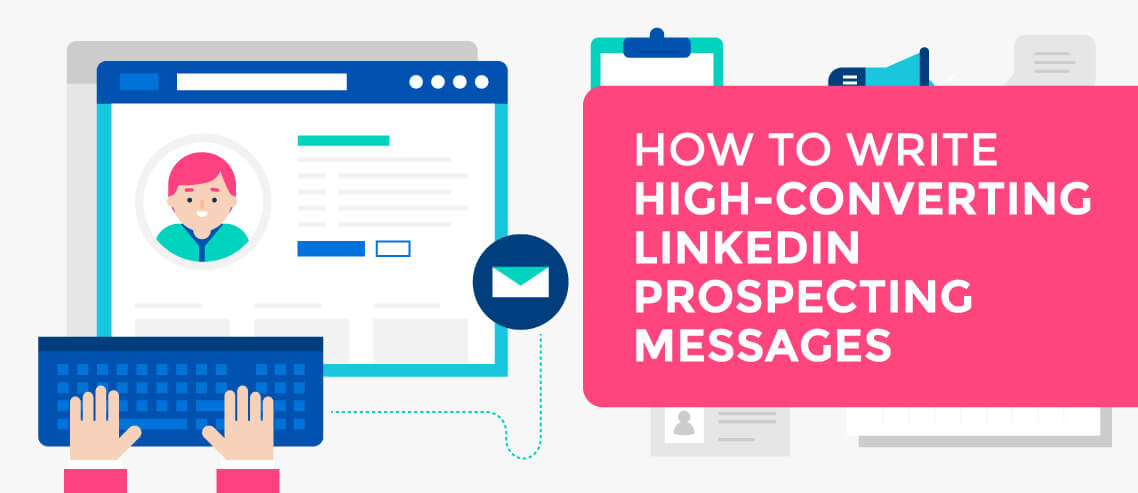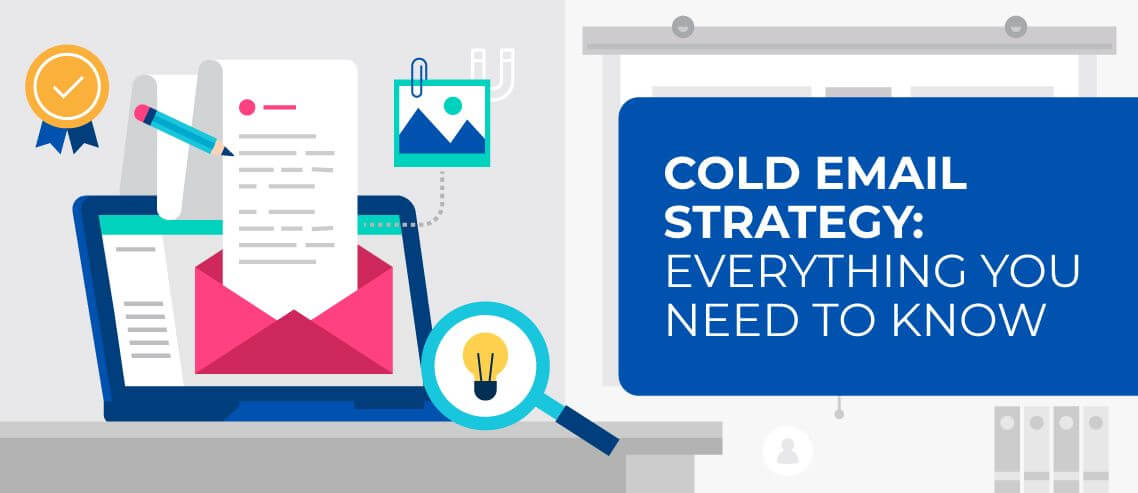16 Follow-Up Email Subject Lines to Steal for Your Next Campaign
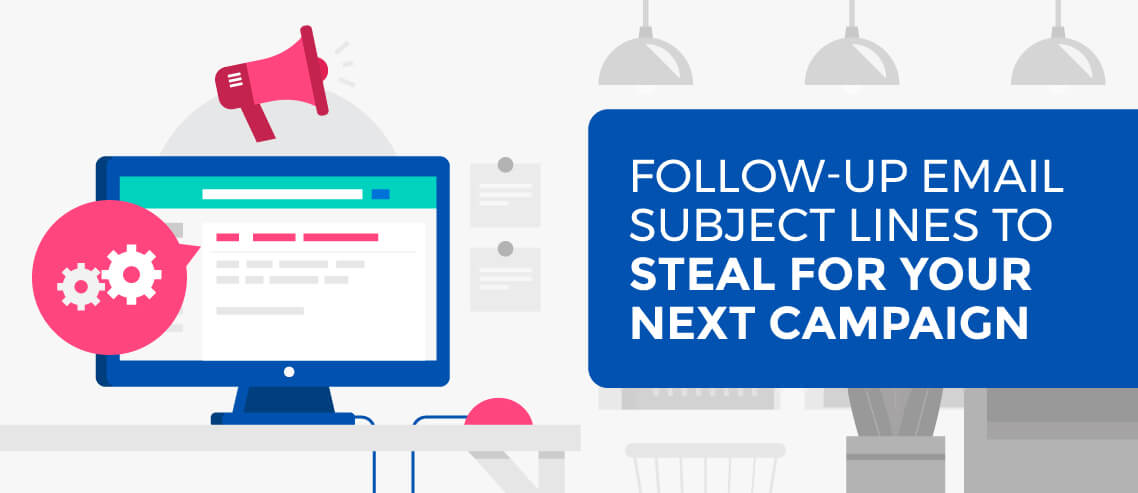
Contents
The art of prospecting lies in getting past the gatekeeper. After all, without the opportunity to face your prospect and pitch them properly, even the best sales pitches are worthless.
On sales prospecting calls, that gatekeeper is typically a receptionist or assistant. However, when prospecting by email, the gatekeeper is often the prospect themselves. And like most of us, they’re receiving an avalanche of email each day that can’t possibly all be read and responded to.
The result is that they end up scanning subject lines and skimming the first sentence or two to assess worthiness, interest, and urgency. Knowing that everyone is skimming and scanning leaves you no choice but to up your subject line writing game to stand out from the crowd.
Mastering the art of the follow-up email subject line and remaining persistent will pay dividends in the long run. In fact, follow-up emails achieve greater response rates than initial emails. One study showed an 18% response rate to the first email sent, 13% to the fourth sent, and an impressive 27% to the sixth email sent.
Follow-Up Email Subject Line Best Practices
Every sales and marketing channel comes with its own set of challenges, so as you experiment with the 16 follow-up email subject lines below, keep the following subject line best practices in mind:
Sound Natural and Conversational
Subject lines that are overly sales-driven or come on too strong are off-putting and are easily ignored or marked as spam. Having a friendly, conversational tone that shows you’re human, on the other hand, will seem genuine and be more likely to elicit a response.
Be Brief
Because 56% of people open their email on mobile, lengthy subject lines will get cut off. The sweet spot is six to ten words, but less than five works well also.
Personalize by Adding the Subject’s Name
In some cases, this has been shown to boost open rates. You can also experiment with adding the company name or mentioning a mutual connection or shared experience you found during your research.
Optimize the Snippet
The snippet is that short length of text to the right of the subject line that appears in recipients’ inboxes and gives them a little preview of the email content. If you take a moment to get it right and make it feel personal, you boost your chance of getting your email opened. Neglect it, and your campaign suffers.
Optimizing the snippet pairs well with keeping your subject line short, because if you make your subject line too long, it will overflow and completely replace your snippet.
Your snippet can be anything from an intro that includes the recipient’s name, a thought-provoking question, or even just the first line of a story. But a pro tip here is to ditch any unsubscribe links, whitelist requests, or housekeeping verbiage at the top of your email that might unintentionally show up in the snippet. Push that information to the bottom of your emails so that you can take full advantage of this area.
Think Like a Scientist
Experimenting with your subject lines is an absolute must. People won’t always open the same subject lines, and little tweaks to your campaigns over time can increase open rates, responses, and conversions.
Keep the sender, the snippet, and the email content all the same and send anywhere from 100 to 1,000 emails. Then, send a separate batch with another subject line. Keep track of opens, clicks, replies, and more using a tool like Mailshake.
Ultimately, you’ve got to run your own tests, read up on the latest email findings, and check out the tests others are doing. Getting past the noise of the inbox is no easy feat, which is why knowing how to write effective follow-up email subject lines is crucial. To help your follow-up emails rise to the top, here are 16 follow-up email subject lines you can use to push past all the noise in the inbox and start more conversations.
Automate Your Follow-Up Sequence
If you’re reaching out to hundreds of prospects every week, it’s impossible to manually stay on top of following up with all of them.
That’s why a sales engagement tool like Mailshake is essential to creating an effective, scalable follow-up email sequence.
With Mailshake, you can personalize your emails in bulk with powerful mail merge features, schedule follow-up emails that are paused or triggered based on whether a a recipient opens an email, clicks a link, or replies, and reply to leads straight from your Mailshake dashboard with Lead Catcher.
You can also set the amount of time between follow-ups (5 days between the first and second email, 7 days between the second and third, etc.), and the days and times you want them to send (for instance, between 8 am and 6 pm on weekdays).
[lyte id=”ug3EwoMeCPk” /]
Optimize your copy and overall outreach strategy by AB testing different subject lines, body copy, and full campaign sequences. And with native integrations to your CRM, and third party integrations to hundreds of software tools via Zapier, you can automate your outreach even further by triggering campaigns when someone downloads an eBook, books a meeting, or signs up for a demo.
If social media and phone are a part of your outreach cadence, you can include those touchpoints in your outreach cadences as well with Mailshake Sales Engagement.
Bottom line: following up is absolutely essential to an effective outreach strategy, but there’s no reason why you can’t automate it.
Follow-Up Email Subject Lines for Every Situation
- Following up from a call or meeting
- When you don’t receive a reply
- You made a connection and want to stay on their radar
- They gave permission to circle back later
- Adding a touch of urgency and specificity
- You need their help or direction
- Just left an in-person meeting
- Last ditch effort before you give up
- After a rejection
- They need a friendly reminder
- Following an omni-channel approach
- You have relevant data to share
- You’ve followed up several times with no success
- Seeking a connection or talking point
- When being nice and inquisitive got you nowhere
- An honest approach to starting a conversation
1. Following up from a call or meeting
“Next steps”
Why it works: It’s short, conversational, and to the point. People are inherently curious and often can’t resist learning what those next steps are. It also works well as a tactic to re-engage prospects that may have gone cold.
Yesware compared the reply rate of “Next steps” as a follow-up email subject line to their average reply rate and found it can achieve up to a 70.5% open rate and a 49.6% reply rate. They found that subject line especially useful as a direct follow-up to leaving voicemails with another short sentence about “trying your line” to show added commitment and persistence.
2. When you don’t receive a reply
“I forgot to mention…”
Why it works: It showcases that you’re human and made a mistake. Often, people forget that there’s a person on the other side of the message. Showing a more natural side of yourself can help create a better first impression – one that doesn’t come off as salesy, but rather genuinely earnest. It shows you’re prone to mistakes, just like everyone else.
It’s best to pair this subject line with some sort of provocative statement, useful content, or other resource the recipient might find valuable. For example, in the body, you could tell them about an event you’re co-hosting that they’re invited to, or share an exclusive piece of content that can help them achieve their goals or overcome a particular pain point.
3. You made a connection and want to stay on their radar
“Pleasure chatting with you, [prospect name]”
Why it works: It reminds them that you aren’t a complete stranger, while also showing sincerity. A bit of gratitude makes you more memorable. It also makes sense to add the recipient’s name here for added personalization. As Josh Slone at LeadFuze says, “The more you personalize your subject line, the more benefits you can reap. Good contact data is key.”
Good contact data stems from asking the right questions on your first engagement, as well as doing your initial research to find common ground, possible pain points, and other areas you can use to create a connection.
4. They gave permission to circle back later
“Let’s take another look”
Why it works: If someone gave you the go-ahead to contact them in the future, this subject line conveys that you’ve talked to them before, while still sounding conversational and friendly. It’s always best to come to the conversation with new information or something else of value for your prospects.
It’s also a great alternative to overused subject lines such as, “Checking in” or “Touching base,” which have zero value. Not only do they come off as wasteful and inconsiderate of the prospect’s time, they simply don’t work. In fact, “Touching base” was found to fail 50% of the time. Bottom line: always have a reason for following up.
5. Adding a touch of urgency and specificity
“Tuesday meeting at 10:00”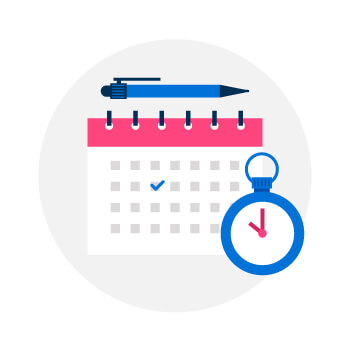
Why it works: The ultimate goal of a follow-up email is typically a call or meeting, so why not throw a “Hail Mary” and ask for one? If they haven’t responded by now, then there’s a good chance the emails aren’t being opened, so this added urgency could grab their attention enough to read your email.
An approach like this exudes confidence and can be especially useful as a follow-up email subject line. Similar to the powerful sales approach of assuming the sale, assuming the meeting can also catch the prospect off-guard. It’s easy to dismiss someone asking for a potential meeting “sometime soon,” but when someone asks you for a meeting at a specific date and time, the typical response is to check your calendar.
6. You need their help or direction
“Can you help me with this?”
Why it works: People inherently want to be helpful, even if they’re busy. Dan Vanrenen, the Managing Director of Taskeater, believes that when it comes to writing compelling subject lines, you should “write a subject line that encourages them to respond and clearly signals your interest in what they have to say.”
This request for aid and empathy shows you’re not just following up for the sale, but for their advice or direction. To be clear, this subject line only works if your request is sincere, and you’re likely to follow their direction or advice. Turned into a follow-up, use this email to ask for connections to the right person at the company you’re prospecting.
7. You just left an in-person meeting
“Great meeting you today, I wanted to share something else”
Why it works: Research suggests that 92% of all salespeople give up after just four “no’s,” but that 80% of prospects say “no” four times before saying “yes.” That doesn’t mean you can get cocky after the fourth touch and assume the deal is done. Instead, continue to follow-up in a timely manner to show gratitude and stay on their radar.
The subject line above shows that you’re grateful for their time and sticks out in their inbox, since it highlights the relevant meeting you shared. On top of that, it piques their interest by sharing that there’s one more thing they left out.
That last bit is crucial because, during the decision-making process, your prospects are always hungry for more. They want to know they’re making the right choice – and to do that, they have to cross a certain threshold of information. Not only that, but the word share here could create a subconscious feeling that they should reciprocate and reply.
8. Last ditch effort before you give up
“Getting tired of salespeople who don’t give up?”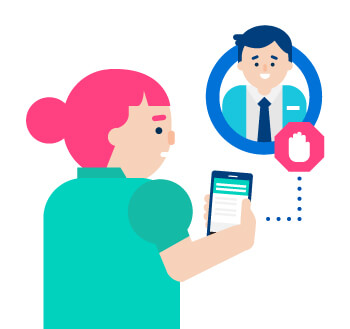
Why it works: Honesty is attractive, and being candid can often elicit a response and start the conversation off on the right foot. While I wouldn’t lead with a subject line like this, it can work wonders after 4-5 failed touchpoints, so long as you follow up properly in the email’s body copy.
For example, in the body copy, you can test something along the lines of:
“Me too. Which is why I pledge to stop contacting you if you aren’t interested.
Just let me know if you [see, deal] with any of these common pain points people in your [role, industry] typically do:
- Issue or pain point 1
- Issue or pain point 2
- Issue or pain point 3
9. After a rejection
“Would anything change your mind?”
Why it works: A subject line like this ignites curiosity and gets them thinking. While they may have already made up their mind about your product or service, you can still play this card to either keep the conversation going or learn something for your next email.
A lot of the time people aren’t just looking for a vendor, but for a partner – someone that can act as a trusted advisor and facilitate a mutually beneficial partnership. Seeking out advice or feedback is a big part of being a partner and can get them on your side for shared success.
A subject line like this also has the bonus of being clear and concise. The format clearly explains what the email is about before opening and is unique enough to warrant opening. Very few salespeople are this direct, so it’s a refreshing take on the selling through curiosity approach.
10. They need a friendly reminder
“You coming?”
Why it works: Fear of missing out, or FOMO, is a very real phenomenon – one that Urban Dictionary defines as, “A state of mental or emotional strain caused by the fear of missing out. An omnipresent anxiety brought on by our cognitive ability to recognize potential opportunities.”
A subject line has a triple threat combination of not only eliciting FOMO, but being brief and providing urgency as well.
On the brevity front, a subject line that’s only two words will always stick out in their inbox amongst the run-on sentence subject lines of most marketing messages. It comes off more conversational as well – almost as if it’s being sent by a friend or colleague.
Urgency is a quick win for any subject line, and this one does it gracefully without coming off as desperate. It provides intrigue by highlighting some event that they might have forgotten about or brushed off. That said, when choosing this subject line, be sure you deliver on the expectations in the body. For instance, it works best if you had previously invited them to something and they never responded, or if you’re now inviting them to something in that email.
11. Following an  omni-channel approach
omni-channel approach
“Just left you a voicemail”
Why it works: It shows this isn’t your first touchpoint and indicates that you’re serious. It also shows that you aren’t just a spammer who should be ignored. While sending 20 emails over a two-week span would be considered spam, the omni-channel approach demonstrated with this subject line shows that you’re seeking a genuine connection and are going to be respectfully persistent.
12. You have relevant data to share
“You’re not alone”
Why it works: To start, it stokes curiosity because it implies they know something about you, your company, or a competitor. Something you’re not aware of or perhaps you’re overlooking. Either way, this subject line is getting opened more often than not. Plus it has the added bonus of being short so it stands out in their inbox.
To truly deliver on a subject line like that, though, you’ve got to follow through in the rest of the message. Thankfully, it easily tees up sharing relevant industry data or competitor insights. It’s easy to capitalize on this subject line if you just released a new whitepaper, invested in some exclusive industry research, or have a killer product that will solve a major pain point you know they’re facing.
13. You’ve followed up several times with no success
“Missed you again”
Why it works: For one, it shows this isn’t the first time you’ve attempted to reach them. That shows persistence and an element of urgency. You’re proving that you aren’t just another face in the crowd. You’ve got something you want to say, and likely won’t give up until given the opportunity to do so.
A subject line like works well within an omni-channel approach that involves touchpoints across several channels – rather than just sending through a high volume of email touchpoints. That way you come off less spammy. For instance, you can send your initial email, then call a couple days later, follow them on Twitter the following week, and try emailing again a few days after that.
The frequency of touchpoints is up to your style, but if you keep leapfrogging between all the channels you’ve found them on, then the odds of eventually breaking through are in your favor.
14. Seeking a connection or talking point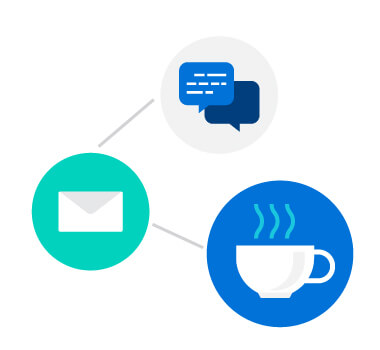
“Have you tried [local restaurant name] in [their city]?”
Why it works: Everyone is aggressively pitching their product these days, talking about how great they are and – in effect – consistently pushing people away. To break through this noise, you’ve got to be different. One way to do so is to simply start a dialogue with them.
Conversation starters, like the subject line above, are a safe bet, because everyone loves trying new restaurants. It has that added bonus also of providing a local feel and personal touch to the email.
While pulling this email subject line off takes a little research and finesse, it’s totally doable. You don’t even have to have been to that restaurant before. You can say you heard about it and ask if it’s worth going when you visit. If they haven’t been, you can build rapport by sharing all the great things you’ve heard. A true win-win for everyone.
15. When being nice and inquisitive got you nowhere
“Let’s cut to the chase”
Why it works: Sometimes being blunt can break down barriers. People often enjoy candid behavior as it’s outside the norm and can be refreshing. Even better, following through on an email subject line like this is very easy to do.
For one, you can cut the fluff or pleasantries in the body copy and be direct. Tell them you’re behind on your sales quota and that you can give a substantial discount as a result. Tell them you don’t need their business, but you know they would benefit from your product. Do the opposite of what you normally would, and you might find the results surprising.
It’s worth noting this likely shouldn’t be your go-to approach for all customer interactions. However, for particularly tricky, difficult, or downright silent prospects, it can be exactly the kind of strategy that finally breaks through.
16. An honest approach to starting a conversation
“Where should we begin?”
Why it works: Some people like to be sold to in a specific way. A subject line like this starts that conversation in a low-pressure way – one that comes off casual, honest, and to the point.
To make a message like this work, state what you’re looking to achieve and genuinely ask how they’d like to proceed. Some simple questions you can ask include:
- What would it take you to switch?
- What problem has nobody been able to solve for you?
- If you could wave a magic wand and solve your biggest problem what would it solve?
The body copy following this subject line could also take an approach of removing all mental energy by providing numbered options they can choose from. Here’s an example in action:
- Send me a personal video of you explaining your product and how it would benefit my business.
- Let’s schedule a 10-minute call. Send me over a few times that work this week.
- Too busy, email me again in a month, please.
Remember, the key to making your follow-up email subject lines irresistible is to speak directly to the prospect’s needs, pain points, and desires. You’ve got to pique their interest with emotion-provoking language and personalization, and by sounding natural and human instead of salesy and robotic.



